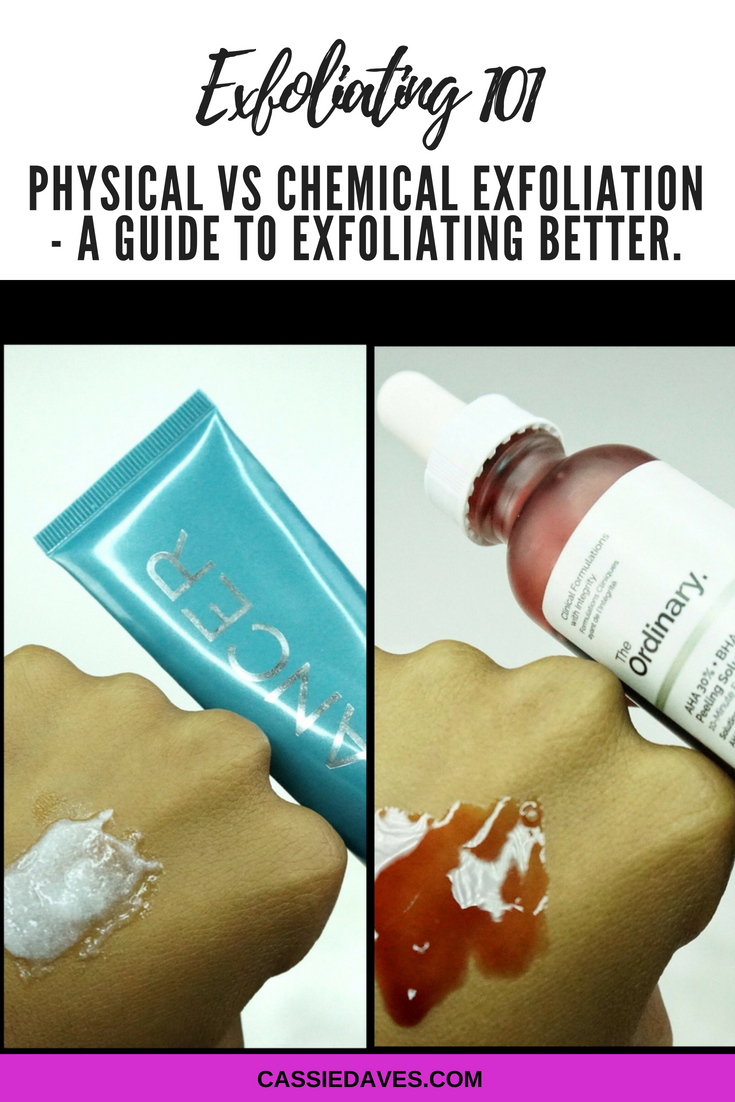 No skincare routine is complete without the exfoliation step. I’m quoting a friend here and really, I agree with her.
No skincare routine is complete without the exfoliation step. I’m quoting a friend here and really, I agree with her.
Exfoliation helps get rid of dead skin cells and allows your serums, moisturizers and other skin care products to sink into your skin a whole lot better.
My first experience with exfoliants was as a kid sitting with my neighbor smearing her sister’s St Ives facial scrub all over our face and feeling really grown up with ourselves.
This shaped my thoughts on “scrubs” and for the longest time, all that I knew about exfoliating and exfoliants were that they had to be products with bead like particles.
But lately, I’ve been hearing about “chemical exfoliation” and it was beginning to do my head in so I decided to reach out to Beauty entrepreneur and blogger – Ije of beautyfrenzy to share some of her knowledge and simplify this whole thing for us.
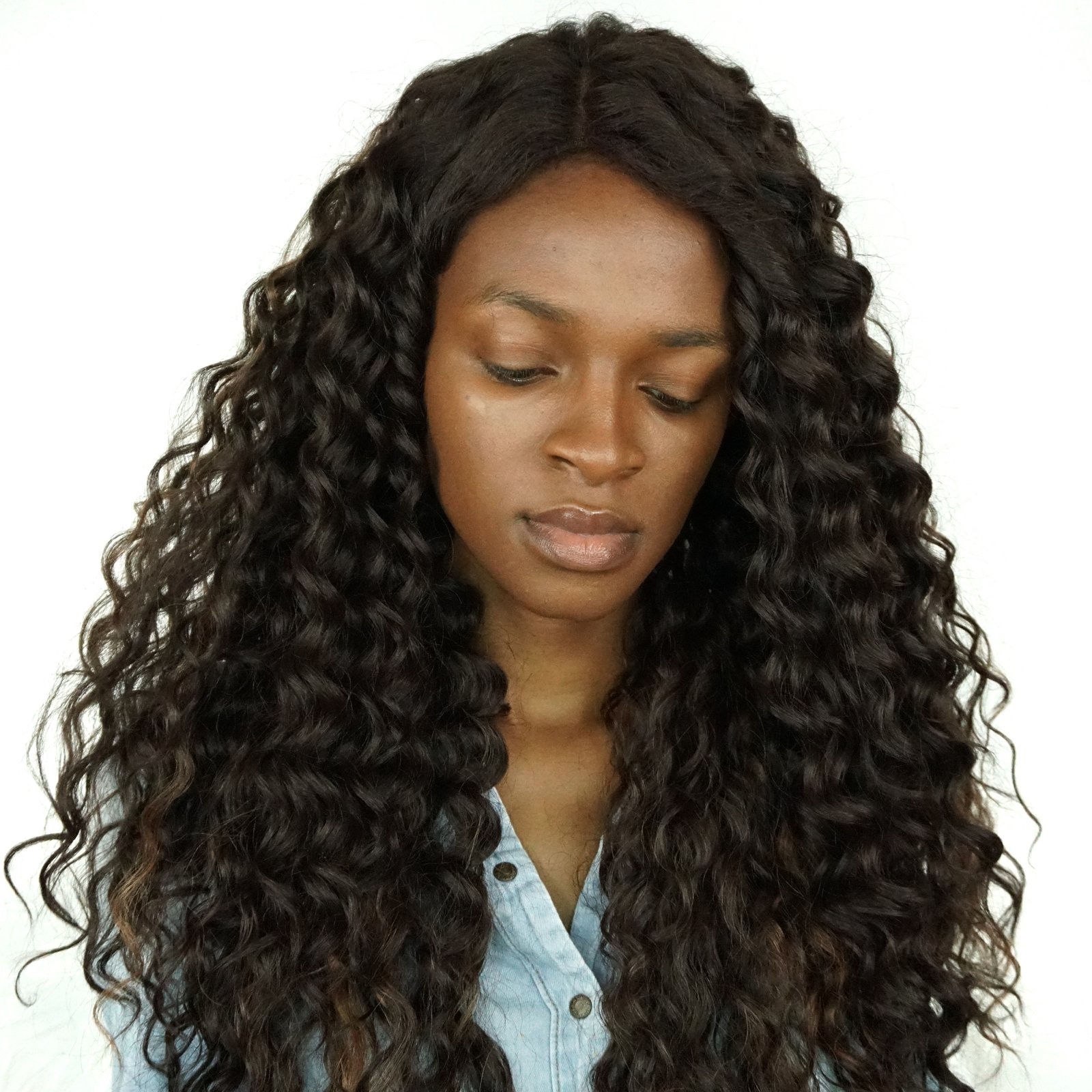
You’ve probably heard the terms Chemical Exfoliation and Physical Exfoliation being tossed around the beauty industry a lot lately. You’re probably also a bit skeptical and unsure about this “chemical exfoliation” thing.
Well, not to worry. In today’s post, I’m going to break down both terms and share everything I know after almost five years of using acids (a.k.a chemical exfoliation) on my face.
By the end of this blog post, you should be able to decide which form of exfoliation works best for you.
Your Exfoliation 101! Physical Exfoliation vs Chemical Exfoliation! Check Out This Guide To Exfoliating Better Click To TweetPhysical Exfoliation.
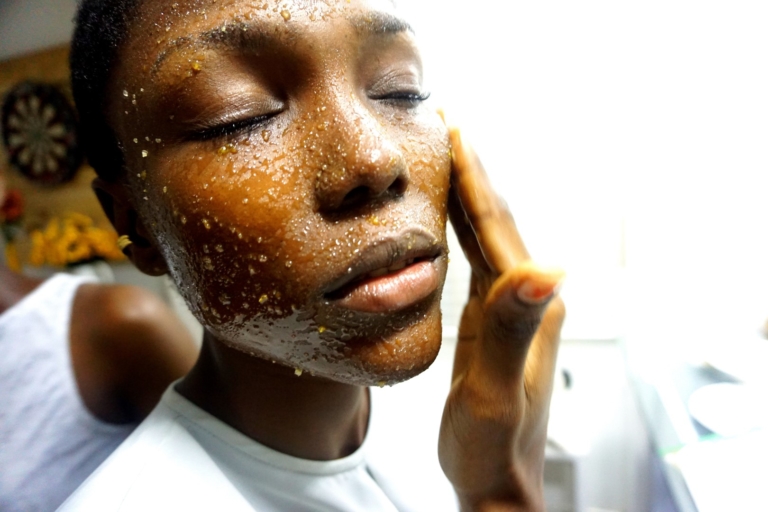
When you hear Exfoliation, you probably immediately think of the usual products with little scrubbing particles in it – That’s physical exfoliation.
Physical exfoliation involves the use of physical force and mechanical tools or methods to remove layers of the skin. So this means your scrubs, facial brushes, konjac sponges, etc.
Related: An easy DIY face scrub formula.
I agree that there’s nothing as satisfying as scrubbing your face and feeling that baby bottom smoothness afterwards. However, physical exfoliation only works on the surface of the skin and is a method that is losing popularity, especially the use of facial scrubs.
Recent studies are also exposing dermatological issues with facial scrubs and more people are turning to other forms of exfoliation.
Chemical Exfoliation.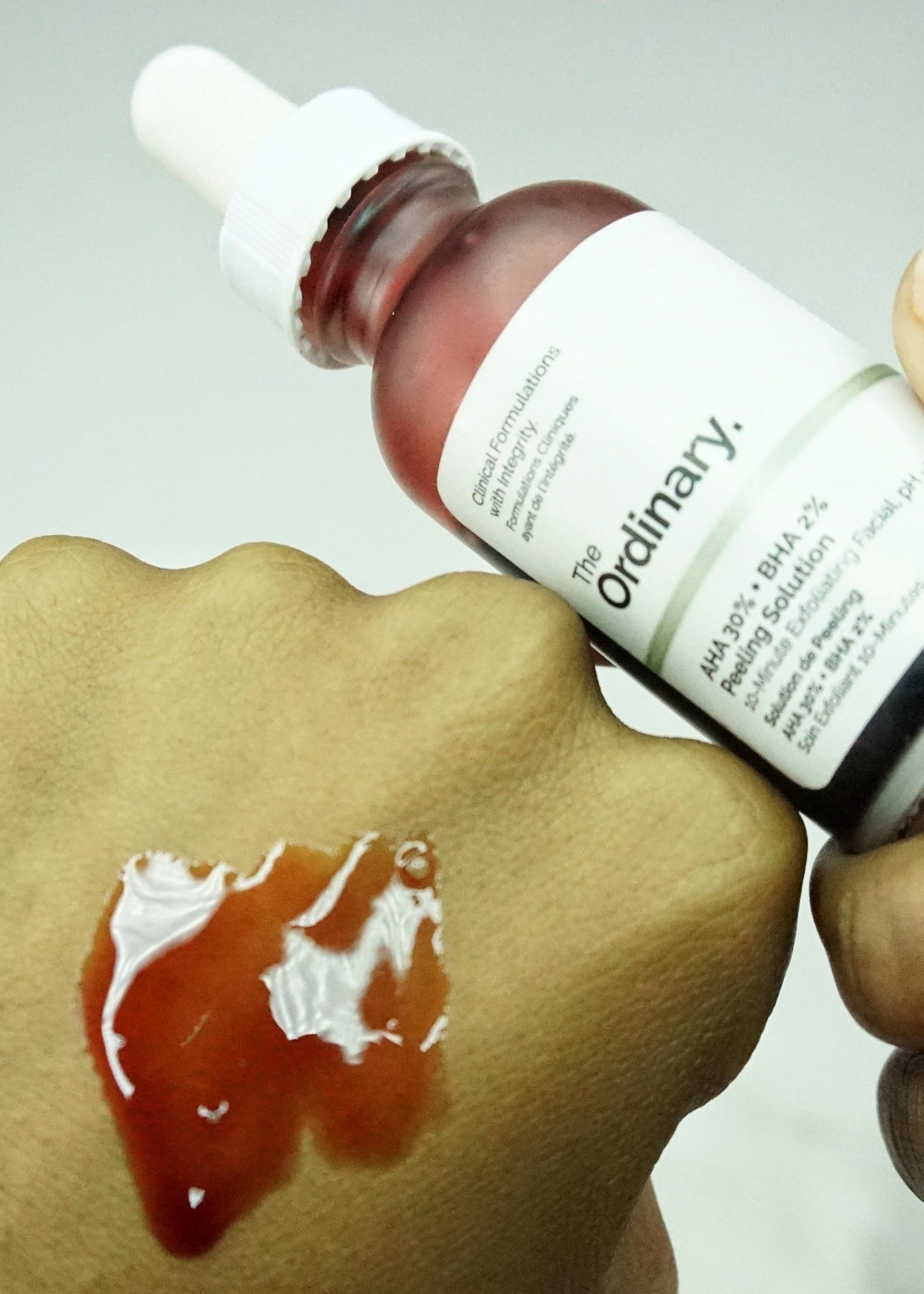
Chemical exfoliation on the other hand relies on the use of exfoliating acids to remove layers of the skin. These acids include Alpha and Beta Hydroxy Acids (AHAs and BHAs) which work to loosen the bonds between dead skin cells and new skin cells, allowing dead skin to be more easily removed.
Most chemical exfoliants also provide other benefits to the skin, aside from just exfoliating. They also generally penetrate deeper and work on deeper layers than physical exfoliants.
Types of chemical exfoliants:
There are different types of chemical exfoliants and they all do different things but the broad stems that you should know are the AHAs and BHAs.
AHAs (alpha hydroxy acids) are water soluble, so they work on the surface and generally help to brighten the skin.
BHAs (beta hydroxy acids) are oil soluble and so they are able to penetrate deeper into the pores and unclog them.
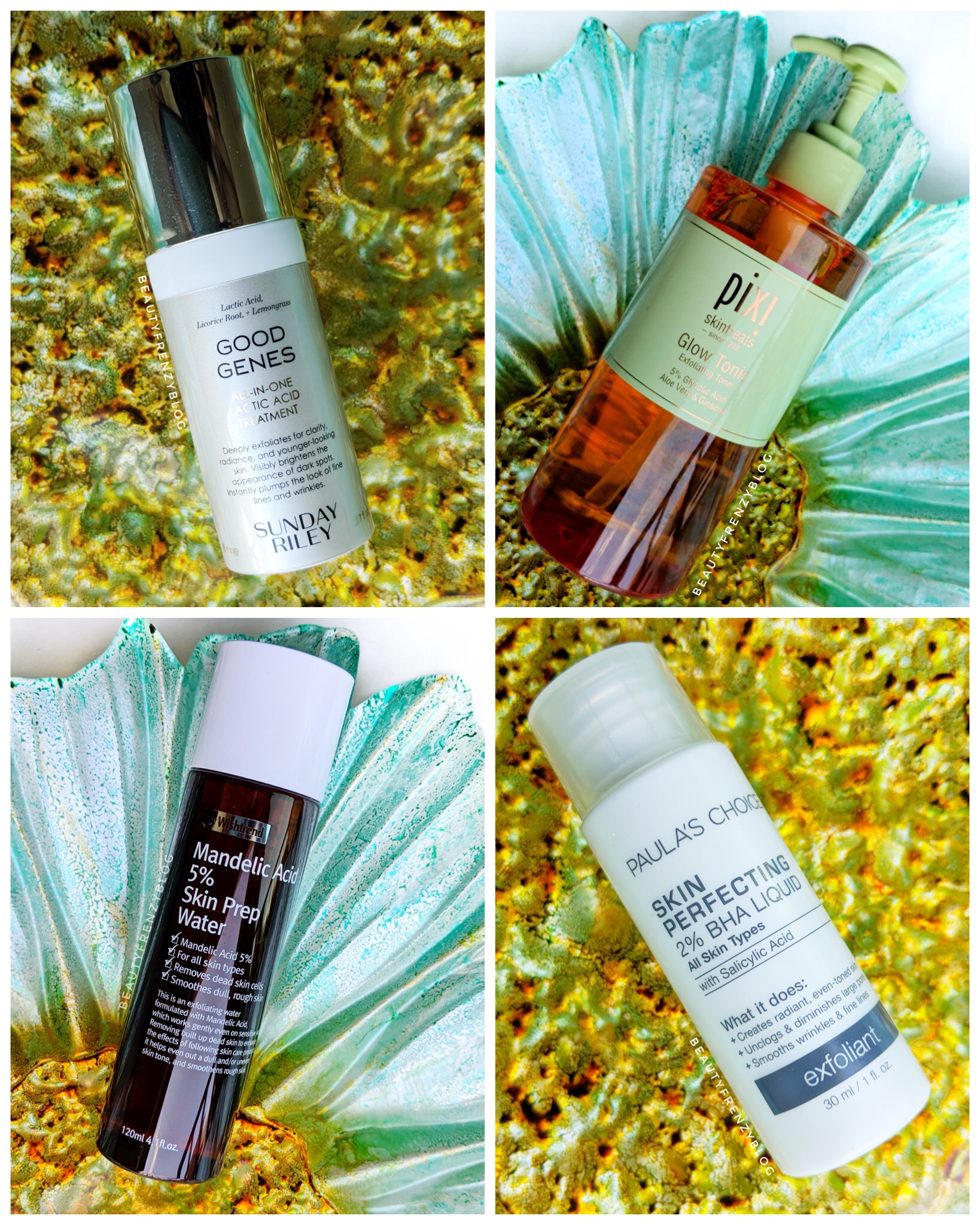
Here are some of the popular acids you’re likely to see in most chemical exfoliants:
Chemical exfoliants include acids such as Glycolic, Salicylic, Lactic and Mandelic acids, and they all target different issues and different skin types.
- Glycolic Acid is an AHA. It is one of the most popular exfoliating acids. It is best for oilier skin types with texture issues or dullness. Pixi Glow Tonic is an excellent glycolic acid toner that I’ve been using on and off for years with no complaints.
- Mandelic Acid is an AHA. It is very gentle and helps with hyperpigmentation. A very small percentage of people react to glycolic acid, in that their skin gets darker when they use glycolic acid. Mandelic Acid is a great alternative for such people. If you’re dealing with any kind of uneven skin tone situation and you’re not sure which acid to go for, this is a safe place to start. Wishtrend Mandelic Acid Skin Prep Water is a really good option if you want to try this.
- Lactic acid is an AHA that does pretty much the same thing glycolic acid does, but it has larger molecules than glycolic acid, so it doesn’t penetrate into the skin as much, which makes it great for sensitive skin. Lactic Acid can be a relatively moisturizing exfoliant, making it great for dry skin. My current favourite Lactic acid product is the Sunday Riley Good Genes, but The Ordinary Lactic Acid 10% is a decent alternative if you’re looking for something more affordable.
- Salicylic Acid is a BHA and it is best for oily skin and clogged pores. Paula’s Choice 2% BHA Solution is my go-to salicylic acid product.
Some products such as Drunk Elephant Sukari Babyfacial have a mix of different types of acids in one single product, and this is great if you are targeting multiple issues or you just want to try something a little stronger.
Other things to note:
- Start with a lower concentration. There are many different levels of chemical exfoliation. Some products contain acid concentrations as gentle as 2%, while others have acid concentrations of up to 30%. The higher the concentration, the more intense the product. For beginners, I would recommend starting with lower percentages.
- Suncare Is Essential! Chemical exfoliation makes your skin more susceptible to sun damage, so be sure to always use a sunscreen of at least SPF 30 when using chemical exfoliants.
- Nourish and Hydrate! Don’t forget to hydrate and nourish your skin after you exfoliate. Include hydrating toners, masks and serums in your routine to keep your skin looking supple!
Related: 5 Skincare Habits To Adopt For Healthy And Clear Skin.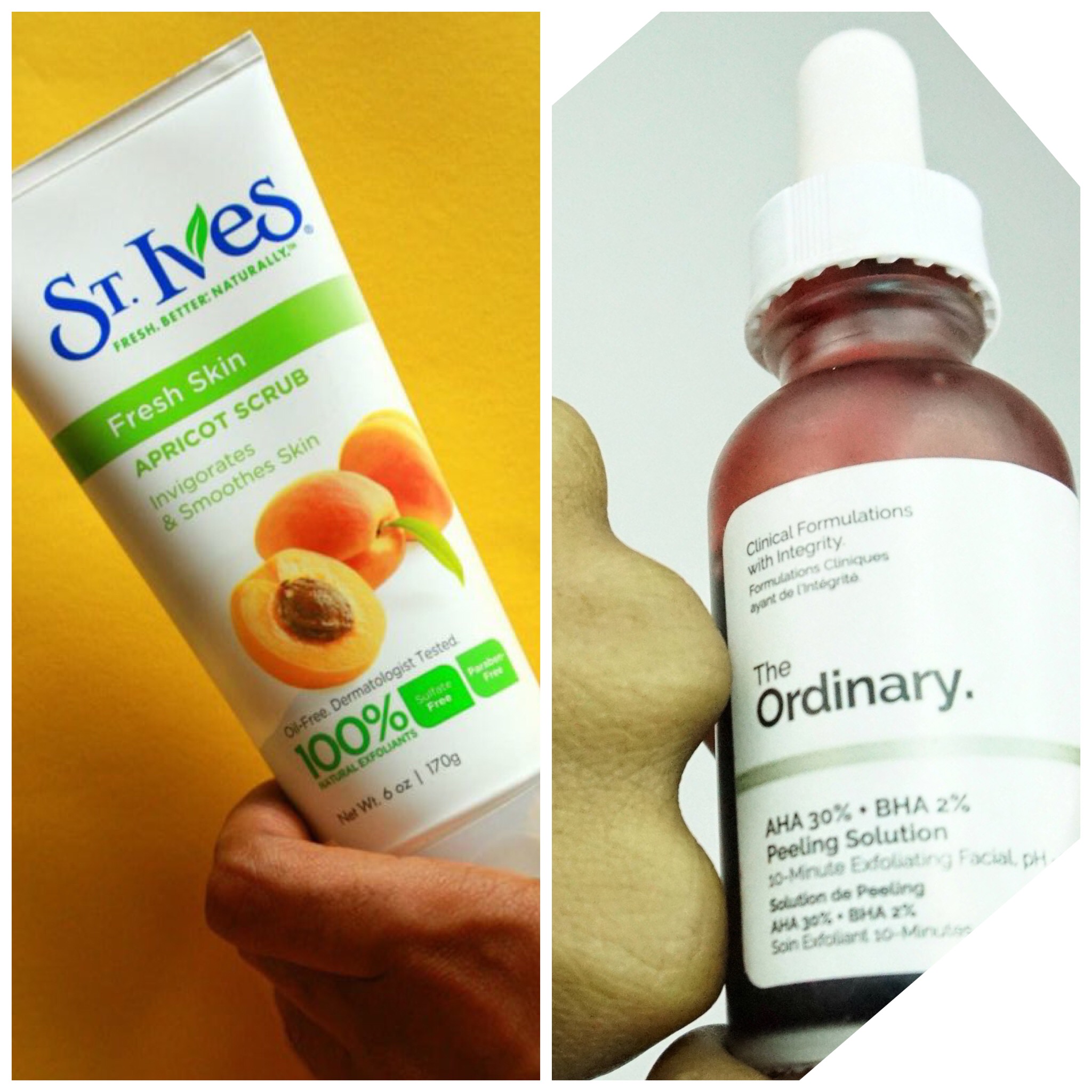
Chemical Vs Physical Exfoliation.
Studies show that facial scrubs can make acne worse by causing further inflammation of the skin. Additionally, they can cause trauma to the skin, which worsens hyper-pigmentation, especially in darker skin.
If you choose to physically exfoliate, facial brushes like the Clarisonic or the Vanity Planet Ultimate Skin Spa are better, gentler alternatives to scrubs. The konjac sponge is also a really good physical exfoliant.
Chemical exfoliation can be gentler and better for the skin when done correctly. If you’re new to chemical exfoliants, I recommend taking note of the things I listed above.
Chemical + Physical Exfoliation.
There is one product that combine elements of chemical and physical exfoliation. The Dermalogica Microfoliant is a skin polisher that combines rice powder with salicylic acid.
That to me, is one of the best and most effective exfoliants out there. It gives you that immediate smooth feeling you get from physical exfoliation, but it is a powder, so it doesn’t actually abrade or traumatize the skin, and the salicylic acid unclogs your pores, preventing blemishes and controlling shine.
Unfortunately, I don’t know any dupes to this product. It truly is one of a kind.
And there you have it..
We’ve covered the definitions and different types, tools, methods and ingredients for chemical and physical exfoliation. We also covered what type of exfoliation different skin types can benefit the most from!
I hope you found this post helpful, this is a really broad topic, but I wanted to simplify it as much as possible, while also covering as much of it as I could. If you have any questions, please comment below, and I will be sure to answer!
About the Guest Blogger:
Ije is a beauty blogger who shares reviews on the latest and best makeup and skincare products on her blog, Beauty Frenzy. (www.beautyfrenzyblog.com).
P.S – If you’d like to purchase any product mentioned in this post, and you live in Nigeria, check out thebeautyfrenzy.com . They’ve also got a pretty cool Instagram page here where they share beauty tips and answer skincare questions.
Thank You Ije for this super helpful post! I hope this was helpful to you too, as I’m personally already planning to give Chemical exfoliation a try
Are you team Physical or chemical exfoliation? WHat exfoliator do you currently use?
Have any extra tips? Please share in the comment section. Share, comment and let’s connect!

Everywhere I look these days, it’s one glycolic acid or AHA or BHA product, every YouTuber/blogger. I feel like God is telling me this is the problem to acne.
It’s just when you buy one, then the next one, then you’re budgeting 25k monthly for facial products, is this one life?
Cassie, see if I buy one of this things and it doesn’t work, me and you- one trousers.
I’d probably just buy one of The Ordinary products.
Thank you Ije.
LMAO this comment cracked me up so bad. Sister please I can’t enter trouser with anyone Plis dear lol!
LOL! That’s how it starts. You try one product and next thing you know you have a whole stash of skincare products in your collection! It’s addictive.
Chemical exfoliants like salicylic acid help combat mild acne or occasional spots by keeping the pores clear, but there are other products like retinoids and benzoyl peroxide that are more effective for serious breakouts. I’m always available via Instagram DM if you have more questions!
Thank you for reading and commenting!
Hello Cassie, how are you doing? Just want to say thank you for this post. Very easy to understand and quite compelling. Finally convinced to try out chemical exfoliants especially that dermalogical microfoliant, which is a combination of both. To think that I’ve been seeing this all around for a while now and finally you’ve taken the time out to explain it to us. Much love 💕
Battling with acne and the desire for healthier (face) skin is a wide spread concern. I love this post and it’s very easy to understand.
I used Neutrogena’s products for acne prone skin for a while-beginning from the acne prone skin foundation, to the acne prone bath gel, to the face cleanser, and the rest 😫 I stopped after a while though. Currently trying out papaya oil and still sticking with the spin brush.
Question: Assuming a product has no adverse effects(like irritation), when would you advice someone to switch products if they’ve not seen results? The challenge is in distinguishing if “this” isn’t just working or if this would take some 3 months, 6 months, to show results.
Most products take around 1- 3 months of consistent use for you to see any tangible results, unless otherwise stated. So if you are not seeing results immediately, but the product isn’t irritating, I’d recommend giving it time.
It all depends too. If for instance, you’re trying something milder like salicylic acid for acne, and it’s not working, you can get faster results by including benzoyl peroxide in your regimen, and if you’re using say alpha arbutin for acne scars, and its not working as fast as you like, you can include vitamin c or an exfoliant for extra brightening effect.
So in conclusion, sometimes you need to switch it up and sometimes you need to be patient. As a general rule, give the product 3 months, and if there are no results at all, it might be time to move on.
How often should exfoliate my scalp, I have normal skin but a very sensitive scalp, I usually avoid exfoliation, please guide how frequently should I exfoliate? your advice will be much appreciated.